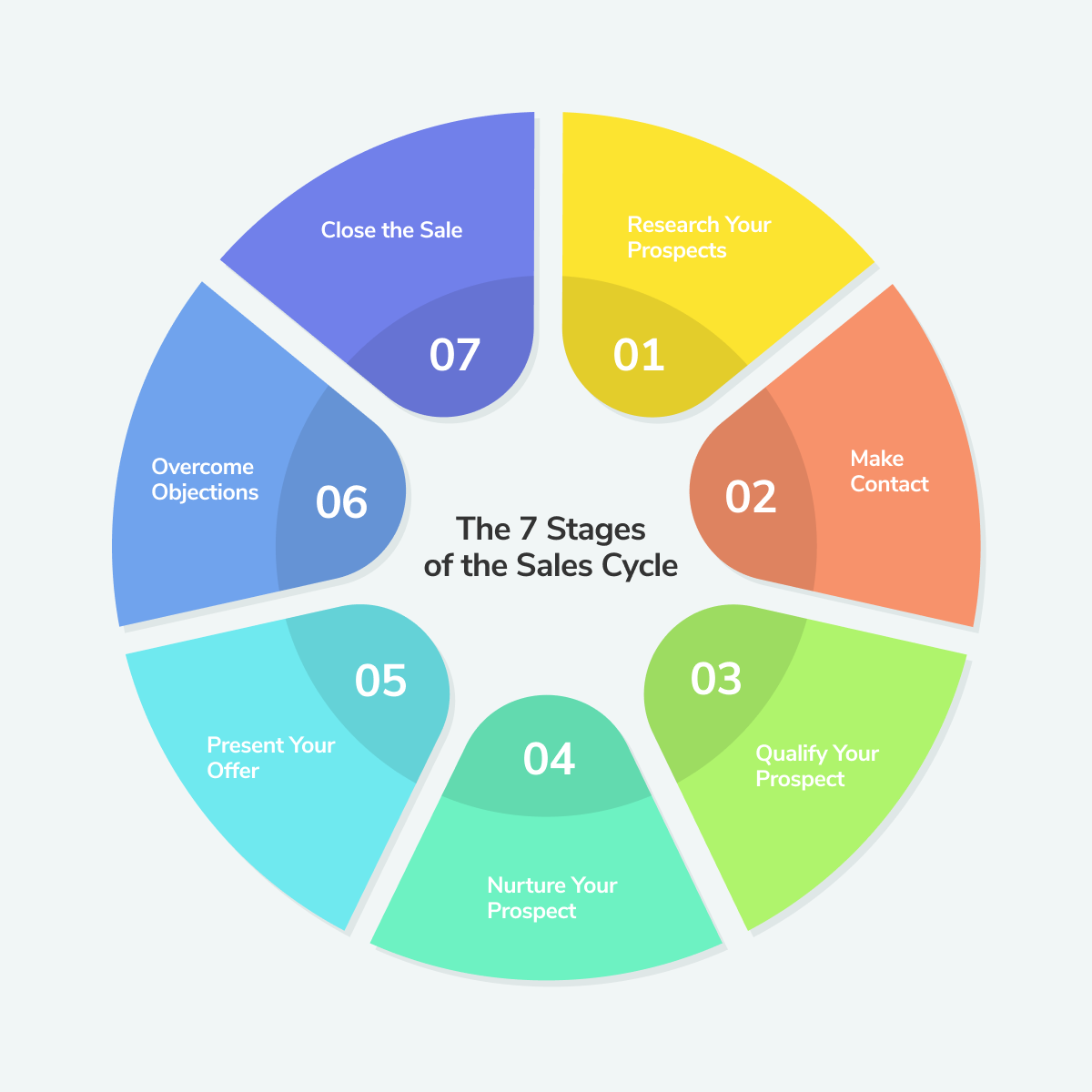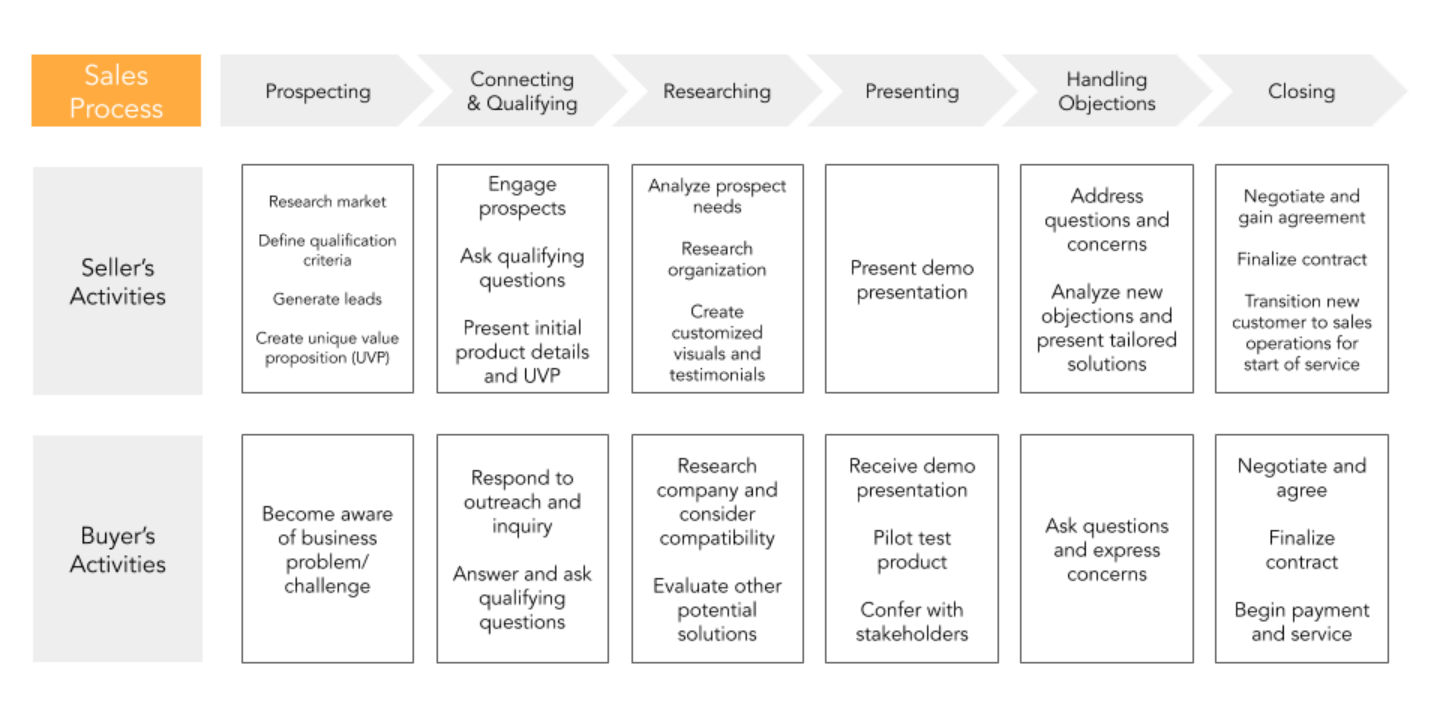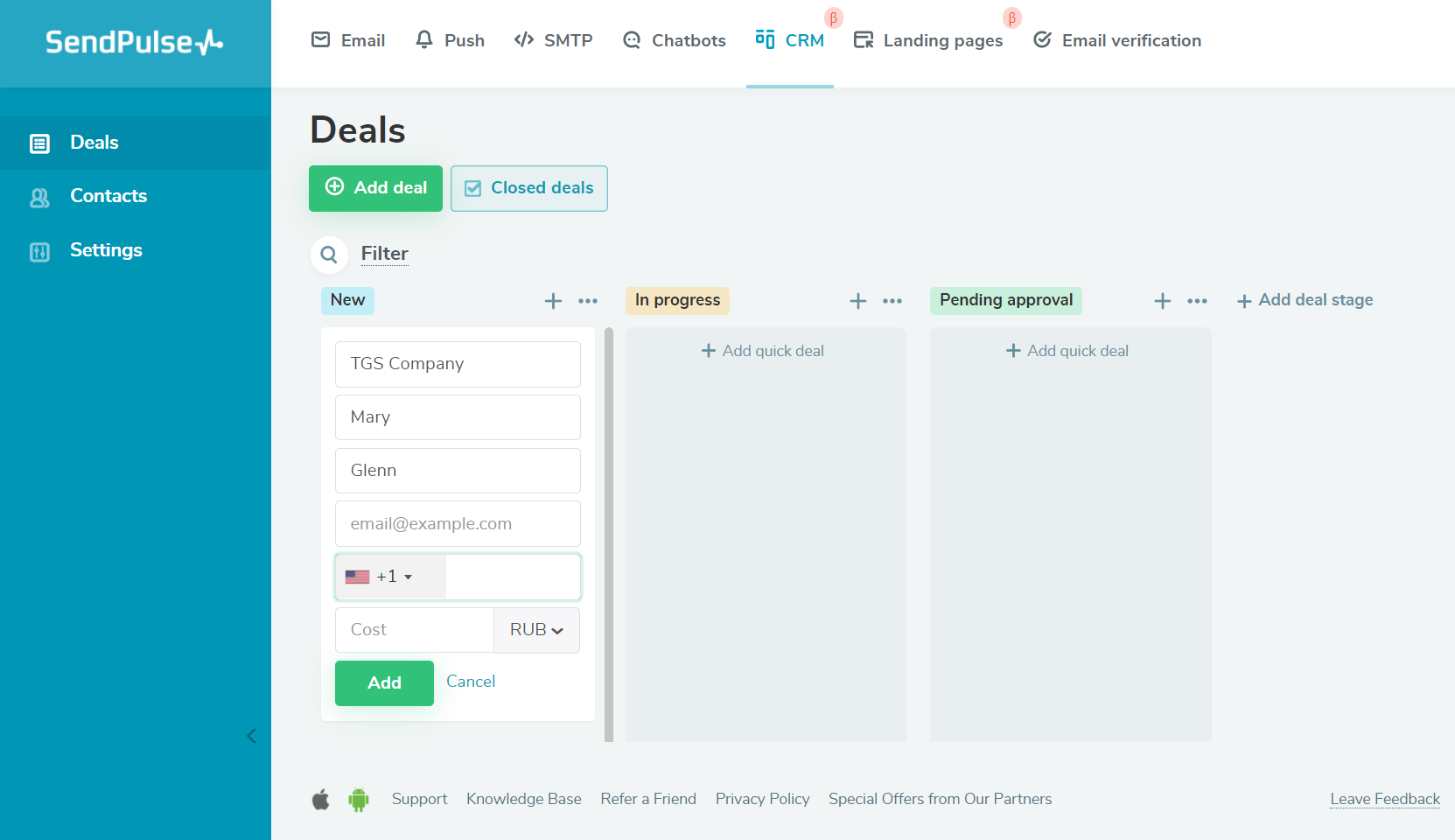Did you know that there is a precise framework behind every closed deal and every purchase, however spontaneous? That framework is called the sales cycle, and it’s important for every sales expert, marketer, or entrepreneur. Knowing the important stages of your sales cycle will make your business more efficient and help you close more deals. You’re about to learn how to master your sales stages, stop relying on luck and develop a concrete set of actions for every member of your team.
What is a sales cycle?
A sales cycle is an actionable framework, a sequence of steps that a salesperson takes to turn a prospect into a sticky customer. The terms “sales cycle” and “sales process” are interchangeable, and they’re applicable for both B2B and B2C companies. However, the sales cycle of a small handmade-soap producer is likely much more primitive than that of a fintech company. That’s why our main focus is going to be on B2B from now on.
A sales cycle is much more than just a sales script. It encompasses all of the actions sales reps take before contacting a prospect, during the nurturing stage, and after closing the deal. It also defines triggers that indicate when your prospect has moved from one stage to the next. Having that framework in place is the best way to make your sales more consistent, align the efforts of your whole team, and scale up.
Why do you need to create a sales cycle?
Understanding your sales cycle is extremely important for everyone who attracts clients or works with them, no matter what their job title is. Here are some key benefits of using that structure:
- You always understand which stage your current prospect is in, what their needs are, and how to fulfill them.
- It’s a sure way to get rid of bottlenecks and fix weak spots in the sales process. With well-defined sales stages, you immediately see when and where something is off.
- Onboarding and training new sales reps is less of a headache. It’s easy to explain what happens in each stage of the sales cycle and where problems may arise while you are training new reps.
- Thanks to the transparency of the sales cycle, you can better evaluate the performance of your sales team and reward outstanding players.
- A buyer-centric sales cycle helps you understand your audience better and deliver the most relevant information.
Now, let’s take a closer look at the stages of the sales cycle and discuss them in more detail.
What are the sales cycle stages?
Entering the sales cycle is a lot like walking down the stairs — if you try to skip a few steps, you’ll inevitably trip up. The sequence is as important here as the set of actions within each stage. Also, you need to define your specific actions-triggers, which indicate the start and the end of each stage.
 Typical stages of the sales cycle
Typical stages of the sales cycle
Find the right prospect
Every sales cycle starts with finding prospects, in other words, potential clients that you’re going to contact. You can find them with active methods such as research on professional resources, networking, recommendations, referrals, databases, etc. Another way is to contact leads that you capture with your marketing efforts.
Your prospects are those who fit your target customer profiles and have an interest in your solution — even if they aren’t aware of its existence yet. In this stage, you need to find out who those people are, their jobs, needs, limitations, area of responsibility, etc. The next question is, how are you going to capture their interest, awaken their curiosity, and, finally, talk to a decision-maker? Before you jump on a call, be sure you know the answers to all of those questions.
Are you getting enough high-quality sales-ready leads from your marketing team? Read our article on
demand generation and learn more about marketing-sales alignment!
The medium makes all the difference. You need to try several means of communication before you decide which one works best for your target audience. Keep in mind, the first touchpoint isn’t the right time to make a sales pitch — all you need to do is to introduce yourself and your product or service, spark their interest, and establish trust.
Personalize your message to the extreme. You can find something special about the person and the company you’re contacting to incorporate in your dialogue. It might be something like, “I noticed that you’ve been working in this role for three years — what solutions have you tried so far?”
The best time to call your prospects is between 4–5 PM, and the second-best time is between 11–12 AM. You also need to make at least 6 attempts to reach out to them before you move on to the next prospect.
Qualify your prospect
After your first conversation, you will be able to tell whether that prospect fits your buyer profile, but don’t stop there. Use everything you’ve learned during your interactions to evaluate that prospect and their potential. Does their company have enough resources to adopt your solution? Have they expressed any buying intent?
The more you uncover during your conversation, the better you can qualify that lead and save time and your resources if it’s a mismatch. By being meticulous, you’ll fill your sales pipeline with high-quality leads engaged from the start. You can qualify your prospects even before you talk to them, but direct contact will always give you more clarity about their goals, pain points, concerns, and limitations.
Nurture your prospect
Once you’ve established contact, it’s time to educate your prospect and share your expertise. Provide them with more information on how to solve their problems and how similar businesses have managed to do so with the help of your product — get their questions answered even before they pop up.
Bear in mind that your prospects have already familiarized themselves with gated content on your website, thanks to your marketing efforts, and now they expect more tailored and individualized assets to help them make a decision. Also, now it’s your turn to research what exactly your prospect needs and how you can fulfill that need.
The best types of content for nurturing campaigns are:
- case studies;
- white papers;
- statistics;
- reports;
- testimonials;
- webinars.
In addition, you can also target prospects through Google, Facebook, and LinkedIn ads to remind them about your solution.
Present your offer
Finally, it’s time to present your personalized offer that encapsulates the solution your future client and their company have been looking for. You might come up with a few packages to cover different sets of needs, from basic to premium. They might sign up for a demo, a trial, or get the full version, depending on the complexity of your product. At this point, you need to explain the whole plan for getting started with your product or service and offer a clear timeline.
Handle objections
Now is the time to fight for the opportunity to close that deal. Your prospect will likely take some time to think about your offer, maybe, discuss it with their team or other decision-makers, or compare it to an offer from your competitor. After that, there’ll certainly be some doubts regarding pricing, features, migration, security, or future maintenance.
Don’t sweep any difficulties and misunderstandings under the rug — if you faced some doubt, go ahead and actively ask for objections first; otherwise, your prospect may give you a generic phrase like “we aren’t ready to make a decision yet,” and you’ll never be able to find out the true reason staying behind the rejection. Give them a clear explanation to eliminate doubt and prove that only your solution can cater to your prospect’s unique needs.
Close the sale
After you’ve addressed and resolved all the objections, nothing is preventing your prospect from signing the contract. However, you can give them a gentle push by demonstrating the benefits they will get if they sign up today. Make sure there are no unexpected costs or fees your prospect doesn’t know about — an unpleasant surprise will be a deal-breaker. Once the deal is closed, send them a follow-up email and lay out what’s ahead for them.
It’s not over yet. In this stage, you need to make them feel that they’re in good hands. Now is the time to stay in touch and keep your clients confident that they have made the right purchasing decision. You can introduce them to your community and notify them about upcoming relevant conferences and workshops or find any other way to bring them value and deliver high-quality support. Also, try to encourage referrals and use upselling opportunities, should they arise.
How to improve your current sales cycle
One way to make your sales cycle work is to find out at which stage most troubles occur by comparing conversion rates and the time each stage takes. Then, you can openly discuss those problematic areas with your sales reps and train them on how to overcome that particular obstacle and keep the conversions coming.
For example, if you’re losing a lot of prospects during the qualification stage, you may want to invest more in research and capturing more high-quality leads. And if it takes three months to nurture a lead and they still say no, the problem might be that you don’t have enough relevant case studies or testimonials to convince them that your solution is real and worth the money.
Another way to uncover weak spots is to look at the same process from your prospect’s point of view. It’s easy to find and point at the mismatch once you’ve aligned those two cycles:
 Take a look at your sales cycle through the customer’s eyes; source: Hubspot
Take a look at your sales cycle through the customer’s eyes; source: Hubspot
Is there a direct connection between your prospects’ needs and expectations and the actions your sales rep takes? You can write down your sales cycle in more detail to spot the missing pieces of the puzzle.
What do you need to implement a sales cycle?
You don’t need to carry everything in your head nor in a gigantic Google doc. Try SendPulse CRM, and you’ll immediately feel the difference. It’s a simple and convenient tool that offers everything you need — it helps teams stay in control of their sales and nurture customers from the first contact to closing the deal.
Our free CRM system is built to help teams automate and track their communications and manage leads. Within the CRM, you can keep important contacts in order, create custom deal stages, add your clients’ info, and see their progress through your sales cycle stages:
 You can start using SendPulse CRM for free in no time
You can start using SendPulse CRM for free in no time
Combine it with our email automation tools to create drip campaigns and nurture your leads from the first touchpoint on. You’ll be able to facilitate communication with your prospects and make visible progress instead of sending emails back and forth manually.
Summing up
Of course, you can tweak and adapt these sales cycle stages to fit your specific product and commercial goals. But, as they say, before you break the rules, you need to learn them. Also, keep in mind your sales cycle is never going to be a finished piece. The world around us is changing, and so are trends and customers’ needs.
If you’re eager to learn more about buzzing marketing and sales strategies, tools, and practices, subscribe to our digest and never miss an article!